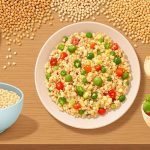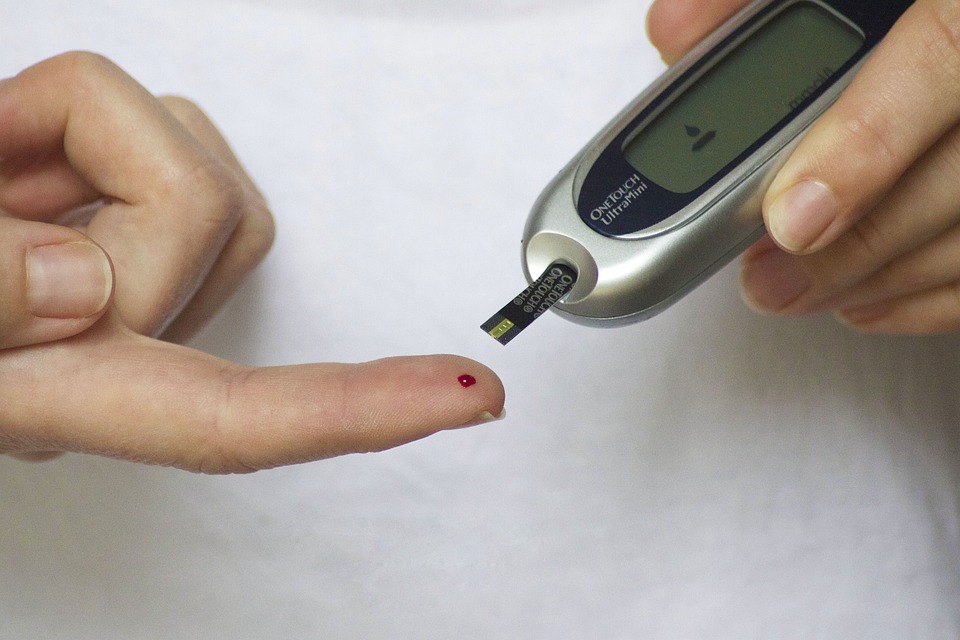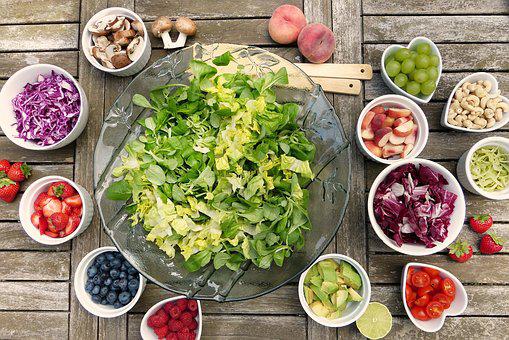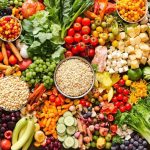
Carbohydrates are the ideal substance to supply your body with its required nourishment. They supply your brain and nervous system with vital nutrients, provide energy to each of your cells within a healthy caloric boundary, and assist in keeping your body in great shape and trim. Specifically, digestible carbohydrates contribute to a diet in the form of bulk-forming food, vitamins, and minerals, while indigestible carbohydrates are a significant source of dietary fiber that offer a range of health advantages. Vegetables, fruits, and grains that we consume all make glucose, a type of swift-acting carbohydrate, from carbon dioxide in the atmosphere and water by utilizing the sunlight’s power. Plants take the energy contained in sunlight and turn it into a chemical form in the sugar glucose. Plants take in glucose and transform it into other more substantial, slower metabolizing carbs. When we consume vegetation, we obtain the power of glucose to maintain life.
Organic molecules consisting of a proportion of one carbon atom, two hydrogen atoms, and one oxygen atom. Basically, they are hydrated carbons. The word “carbo” means carbon, and “hydrate” means water. The most plentiful carbohydrate in the human body is glucose.
CARBOHYDRATES: TWO VERY DIFFERENT TYPES
There are two types of carbohydrates based on how quickly they break down in the body, either fast or slow:
Fast-releasing carbohydrates are sugars. Rapidly digested sugars get broken down quickly, providing your body with rapid energy.
Slow-releasing carbohydrates are starches and fibers.
A lot of starch molecules can be found in grains, pulses, and root veggies like potatoes. Consuming uncooked starches gives scarce energy since it is tough for the digestive system to process them. Heating food helps to disintegrate the arrangement of starches, which makes them simpler to absorb in the body and contribute energy.
Fiber brings something that the body doesn’t have: our bodies don’t have the necessary enzymes to break it down, but the bacteria present in our gut can give us a helping hand. These microorganisms process a portion of the fiber, however, the majority of dietary fiber consumption helps to control how hungry we feel (assists us in managing our appetite) and improves the cleaning of the intestine. Imagine dietary fiber as a broom that cleans out the interior of your intestines.
FUNCTIONS OF CARBOHYDRATES
The primary function of carbohydrates in the body is to supply energy – Glucose, the most basic carbohydrate and the one found in the most abundance in the human body, is used for this purpose. All living things, from bacteria, and plants to animals, find glucose to be the most efficient energy source. The brain needs glucose to function, except when someone is starving severely. Other types of carbohydrates that are more intricate can be broken down into glucose inside the body.
Extra carbohydrates are kept in our liver and muscles so that the body can access them if necessary; it’s like having an auxiliary power source.
Construct large molecules – Even though the majority of assimilated glucose is required for producing energy, some of it is changed into ribose and deoxyribose which are crucial components for constructing significant macromolecules like RNA, DNA, and ATP. Glucose is also needed to synthesize the element NADPH, which is crucial for safeguarding against oxidative damage and is part of several other chemical processes in the body. If sufficient amounts of energy and glycogen are available to meet the body’s needs and requirements, any additional glucose will be converted into fat.
When extra glucose is required and there is a scarcity of it, the body will obtain proteins and fats from the muscle and convert them into glucose. There is enough glucose in the body so that it does not have to convert proteins into glucose in order to meet its needs.
WHAT FOODS ARE RICH IN CARBOHYDRATES?
Carbohydrates are components of all five main food categories: grains, fruits, vegetables, meats (some of which have been processed), beans, and dairy products. Quickly released carbs are commonly found in fruits, fruit juice, and dairy products, while complex carbs are more common in starchy veggies, beans, and grain-based foods. Processed foods, sugary drinks, and candies all contain a lot of quick-acting carbohydrates. The quantity of carbohydrates that is normally present in a single helping of fruits, unprocessed grains, or starches is 15 grams.
When selecting carbohydrates for a diet, it’s recommended to pick foods that are rich in nutrients and include a high amount of essential vitamins or minerals per calorie consumed. In general, food items that are rich in nutrients and contain little or no processing are whole-grain bread and cereals, dairy products with low-fat, fruits, vegetables, and beans. Instead of nutrient-dense carbohydrate foods, processed high-calorie carbohydrates can be found with an addition of sugar and fat. Examples of carbohydrates that contain little or no nutritional value are things like soda, desserts, biscuits, and sweets. When you select foods high in nutrients, you provide your body with improved nourishment and better chances to perform at its best. We all aspire to lead a satisfying life, feel at our prime, and make prudent decisions about our meals.
HOW MUCH CARBOHYDRATES DOES A PERSON NEED?
IOM’s Food and Nutrition Board suggests that both adults and kids consume 130 grams of carbs each day, according to the Recommended Dietary Allowance. This is the typical least sum the brain needs in order to perform correctly. The AMDR for carbohydrates suggests that somewhere between 45 and 65 percent of your total calories for the day should come from carbs. A diet of 2,000 kilocalories requires a person to consume between 225-325 grams of carbohydrates on a daily basis. The IOM has stated that the maximum amount of calories that should come from added sugars should not exceed 25 percent. The World Health Organization and the American Heart Association advise that people’s consumption of sugars that have been added to food should be limited to ten percent or less of their total caloric intake. The Institute of Medicine has prescribed the appropriate consumption of dietary fiber which is 38 grams for men and 25 grams for women. The suggested consumption of dietary fiber is derived from the amounts known to stave off coronary heart disease.
UNDERSTANDING CARBOHYDRATES FROM PRODUCT INFORMATION
Nutrition facts labels can help you to figure out the number of carbohydrates that you have eaten, but they do not provide information regarding whether a food has been processed or not. The ingredients list provides some help in this regard. This statement lists the constituents of the food in descending order of prominence, beginning with the component with the highest concentration. When selecting a type of bread, opt for an option that has whole wheat as the primary ingredient and steer clear of ones that have white flour or corn flour as primary ingredients. Substitute products with a low amount of added sugars such as HFCS, sucrose, honey, dextrose, and cane sugar, and instead keep enriched wheat flour, which is made up of white flour with added vitamins, towards the beginning of the ingredients list.
PERSONAL CHOICES
Most foods contain carbohydrates, which gives you plenty of options for hitting your daily carbohydrate target, as part of a healthy diet. The 2010 Dietary Guidelines suggest consuming more whole-grain carbohydrates and more fiber, while decreasing the amount of foods with added sugars. To accomplish these recommendations use some or all of the following suggestions:
- Get more daily carbohydrate servings from whole grains by eating whole-grain cereal for breakfast, using whole-grain bread to make a sandwich for lunch, and eating a serving of beans and/or nuts with dinner.
- Make sure to get at least three servings (or more) of all the grains you eat as whole grains every day. A serving of whole grains is equal to one slice of whole-wheat bread, one ounce of whole-grain cereal, and one-half cup of cooked cereal, brown rice, or whole-wheat pasta.
- Food products made with cornmeal use whole grain so choose tortillas, corn cereals, and corn bread with cornmeal listed as the first ingredient.
- When baking, substitute whole-wheat flour or other whole-grain flour for some of the refined white flour.
- If you like bread at dinner, choose a whole-grain muffin over a Kaiser roll or baguette.
- Add beans, nuts, or seeds to the salad—they add texture and taste.
- Choose whole-grain pasta and brown rice, cook al dente, and add some beans and vegetables in equal portions.
- Change it up a bit and experience the taste and satisfaction of other whole grains such as barley, quinoa, and bulgur.
- Eat snacks high in fiber, such as almonds, pistachios, raisins, and air-popped popcorn.
- Add an artichoke and green peas to your dinner plate more often.
- Calm your “sweet tooth” by eating fruits, such as berries or an apple.
- Replace sugary soft drinks with seltzer water, tea, or a small amount of 100 percent fruit juice added to water or soda water.
HOW TO FIND WHOLE GRAINS
Customers are becoming more conscious of the positive effects that wholegrains can have on one’s health, and therefore are starting to search for whole grain items when shopping for food. The food industry wishes to make money from this new demand without actually adjusting what they produce, so they put words on the product’s packaging that suggest the item is made from whole grains, even though it is not. An illustration is that “whole wheat” does not signify that the item is created from entire grains exclusively. It is not necessarily true that brown bread is healthier than white bread: some makers put in caramel coloring to the dough to make it look darker, not adding any whole grains. The Food and Drug Administration (FDA) has put in place a requirement that manufacturers in the food industry must indicate on their labels if any of their products have been made completely from whole grains. Any other food item is not made up of whole grains, so you won’t acquire the health benefits associated with them. If you check the list of ingredients on a product package, the first item must be 100% whole-grain or 100% whole-wheat flour. Other types of flour like wheat flour, white flour, yellow corn semolina flour, degerminated flour, or durum flour must not be included. Progress is being made in the US when it comes to more whole-grain options, but there is still work to be done in terms of cutting down on the quantity of sugar used in many store-bought loaves of bread, ensuring that additional fiber is from a reliable source, clarifying extravagant claiming on the packaging, and reducing the cost of whole-grain bread, which still is higher than that of white bread.
SUGAR AND SUGAR ALTERNATIVES
One of the five primary flavors we experience when eating and drinking is sweetness, which is detected by the taste buds situated on our tongues. Many carbohydrates are sugars and taste sweet. However, not all carbohydrates are equally sweet. Certain carbohydrates are rapidly metabolized; they are referred to as fast-acting carbs and they have the most intense sweetness. It can be stated that your tongue has such a high level of sensitivity that even minuscule doses of lengthy digesting carbohydrates can be identified and this will activate the sweet taste experience. The level of sweetness varies among the various types of carbohydrates, with some having much greater sweetness than the rest.
Given the detrimental health effects that come with consuming too much sugar, many products now make use of sugar alternatives instead. Substitutes for sugar could derive from either natural or artificial origins. Synthetic sweeteners that have been created by human beings are termed artificial sweeteners and must receive the endorsement of the FDA before they can be added to food and drinks. The FDA has given their blessing to the use of saccharin, aspartame, acesulfame potassium, neotame, and sucralose as artificial sweeteners. Stevia is an example of a naturally-derived sugar substitute. The use of food and drink containing artificial sweeteners may help to improve health by decreasing the intake of basic sugars, which are higher in calories, can cause tooth decay, and may be associated with long-term illnesses. Eating products with sugar substitutes may lead to the most frequent unfavorable consequence, which is GI distress caused by an incomplete digestive process.
BENEFITS OF SUGAR SUBSTITUTES
Eating and drinking things that contain sugar replacements may be advantageous to well-being by cutting down the intake of basic sugars, which are denser in calories, create cavities, and could be associated with long-term illness. Synthetic sweeteners are typically not considered to be nutritious, though not all are totally devoid of calories. However, due to their very strong sweetness, these items are only utilized in small portions when added to food and drinks. Artificial sweeteners and sugar alcohols are not capable of being fermented, so these substances do not contribute to the development of dental cavities. The only scientific evidence that artificial sweeteners have a positive effect on oral health is through chewing gum containing them. The American Dental Association permits businesses that make gum to attach its seal to the packaging if the company can exhibit reliable scientific data showing that the gum either diminishes plaque acids, cavities, or gum disease or it improves the remineralization of teeth.
Few studies have found that consuming products with artificial sweeteners may help reduce weight. Evidence suggests that due to the great sweetness of the items, it could cause a craving for sweets which could lead to putting on more pounds. Very little proof has been seen to indicate that artificial sweeteners cause a decrease in blood sugar levels. As well, many products such as sugar-free gum and diet soda which contain artificial sweeteners and sugar alcohols still have no nutritional benefit and will not improve one’s blood glucose level or overall health.
DISEASES RELATED TO CARBOHYDRATES
Eating an excessive amount of sugar can result in Oral Disease, which encompasses the deterioration of teeth, gums, and the tissue in the mouth.
If you want to prevent or lessen your risk of oral disease, switch to a beverage that does not contain sugar, and make sure to brush your teeth. Overconsumption of sugar does not cause diabetes. Genes, diet, environment, and way of life all contribute to a person’s chance of getting diabetes, much like other illnesses. There are two types of diabetes. In the past, Type 1 Diabetes was a fatal diagnosis, yet it is now manageable with insulin injections. In spite of its life-preserving properties, insulin shots cannot eliminate diabetes altogether, and those affected by the disease can experience numerous health problems. Maintaining tight control of blood sugar, sticking to a nutritious regime, and getting more exercise can all aid in the alleviation of the issues that come with having diabetes. There has been a sharp rise in Type 2 Diabetes in the US over the last three decades, and this is believed to be linked to the rise of obesity. Tackling Type 2 Diabetes starts with a healthy meal plan and exercising more frequently. The long-term health consequences of diabetes are severe. The consequences of consistently elevated blood sugar levels coupled with abnormal metabolic phenomena like raised levels of lipids in the blood are what lead to them.














